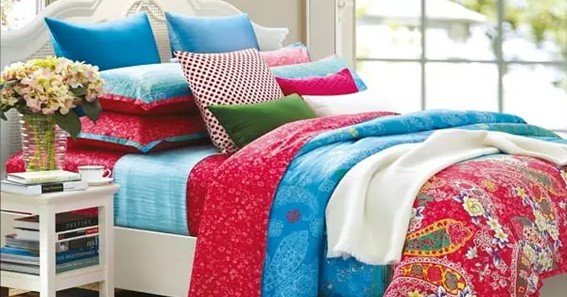What is flannel? People usually think of snug shirts, toasty blankets, and outdoor gear when they hear this question. Flannel has a lengthy history and everlasting appeal. Comfortable and durable are common attributes.
This article dives deep into What is flannel and why has it been a closet staple for centuries, it investigate where this popular cloth fabric came from, what makes it special, and its many Uses.
What is Flannel?
Flannel is a fabric produced from cotton, wool, or synthetic fibers. It is Soft and ideal weight. Lots of people are soft. This is done by napping. While you sleep, you brush the towel to make it smooth and warm. Being of so good quality makes it smooth and warm.
Origins of Flannel

Flannel is ancient. Early flannel was manufactured from Welsh wool in the 1600s. It was warm and durable, so farmers and workers wore it. As the Industrial Revolution began, flannel production spread across Europe and North America. Cotton replaced wool as the fabric of choice. This made flannel more accessible and useful, cementing its role in fashion and home decor.
Modern textile technologies and changing consumer demands lead to flannel. The power loom and spinning machine made mass-produced flannel conceivable. The cloth became more popular as it became cheaper and easier to procure.
It immediately became a household staple. Soft and comfortable, flannel was utilized for loungewear, cushions, and blankets. Flannel is increasingly worn worldwide for its adaptability in casual wear and home decor.
Industrial Production
Learn what is flannel and how it’s created. The production process begins with fiber selection. These can be cotton, wool, or synthetic. These fibers become yarn, which becomes cloth. The weave of flannels can vary from twill to plain.
Brushing the fabric when napping brings out its threads and gives it the soft, fuzzy feel of flannel. This can be done on either side of the fabric, depending on the style.
Because they nap, flannels are unique. Brushing raises the strands, creating a fluffy, soft texture that insulates and keeps warm air in.
You can adjust napping time and intensity to get smooth and fuzzy. Some flannels are dyed, printed, or finished to improve color, design, and durability. The fabric is warm and inviting, suitable for garments and home decor.
Flannel Characteristics
A few key qualities define what is flannel. Its suppleness matters most. Soft and fluffy flannel feels lovely against your skin after napping. Flannel is ideal for chilly conditions due to its softness and insulation.
Flannel is also breathable, allowing moisture to escape and keeping users cool. The durability of flannel, especially wool or good cotton, is another benefit. Due to its durability, it can be used for garments and bedding.
Flannel is warm, soft, and flexible, making it ideal for evening, night, and chilly weather. Strong and durable, it retains its shape and softness after many wears and washes. Colors last longer because flannel absorbs and holds dye effectively due to its natural fibers. Warm and textured, the material is used to produce blankets, wraps, and bedding. Overall, flannel is a warm fabric with many uses due to its unique properties.
Fashion Applications
The fashion sector may best demonstrate flannel’s versatility. This fabric has been worn daily and outdoors for decades. Men and women wear classic plaid flannel shirts. These shirts are warm, cozy, and tough, so people adore them.
Flannel is used to produce pajamas, coats, and pants. The fabric is popular in fashion because it layers well and keeps you warm without adding bulk.
Home Textile Uses

Flannel is utilized for home design as well as clothes. Summertime cotton linens and blankets are popular because they keep you warm. Fabric that breathes eliminates sweat and keeps you toasty at night. Soft, absorbent flannel towels are fantastic after showering. People enjoy flannel because it’s comfortable and versatile.
Flannel in Pop Culture
Because of its comfort and resilience, flannel is a social icon. Flannel shirts became popular among artists and fans during the 1990s grunge movement as an anti-establishment trend. Flannel was popular at this time, and its effects are still visible in music and fashion. The fabric evokes individuality and genuineness, popular culture elements, making it memorable.
Impact on the environment
When considering what is flannel, consider its environmental impact. The fibers used to produce flannel affect its durability. Cotton flannel, which requires a lot of water and chemicals, can harm the environment. Organic cotton and recycled fibers are greener. However, wool flannel is natural and reusable.
To maintain this, grazing must be properly managed. Synthetic cloth is cheaper yet contributes to micro plastic contamination. Consumers who care about the environment should consider where the fibers come from and how the fabric is created.
Conclusion
Discovering what flannel is involves studying its history, production, and uses. Flannel has been a durable and functional fabric from its 1600s origins in Wales and its employment in modern clothes and home decor. Its softness, warmth, and durability make it a favorite clothing and bedding material. Its cultural significance enhances its attraction.
Flannel will always be attractive and comfortable if you wear a shirt, cuddle beneath a blanket, or enjoy its place in pop culture. As individuals grow more environmentally conscious, they can choose sustainable flannel solutions to keep this cherished fabric around for years. That is all on what is flannel.
FAQ
What Flannels are made of?
Most flannel is cotton, wool, or synthetic. Material affects cloth texture, warmth, and durability. Each form has advantages.
How is flannel made?
Flannel is made by twisting and napping threads. Brushing the fabric brings out its fibers, giving it a warm, fuzzy sensation while you sleep.
What is flannel usually used for?
Flannel is used to produce shirts, jammies, and coats. Home furnishings, including sheets, blankets, and bathrobes, are made from it. Its warmth and softness make it ideal for chilly weather.
Does flannel help the environment?
The fibers used to produce flannel vary. Organic cotton, recycled fibers, and wool may be greener than conventional cotton.
Why does grunge fashion involve fabric?
The 1990s grunge movement championed flannel as resistance. Flannel shirts are stylish for smart people.
Sources:










